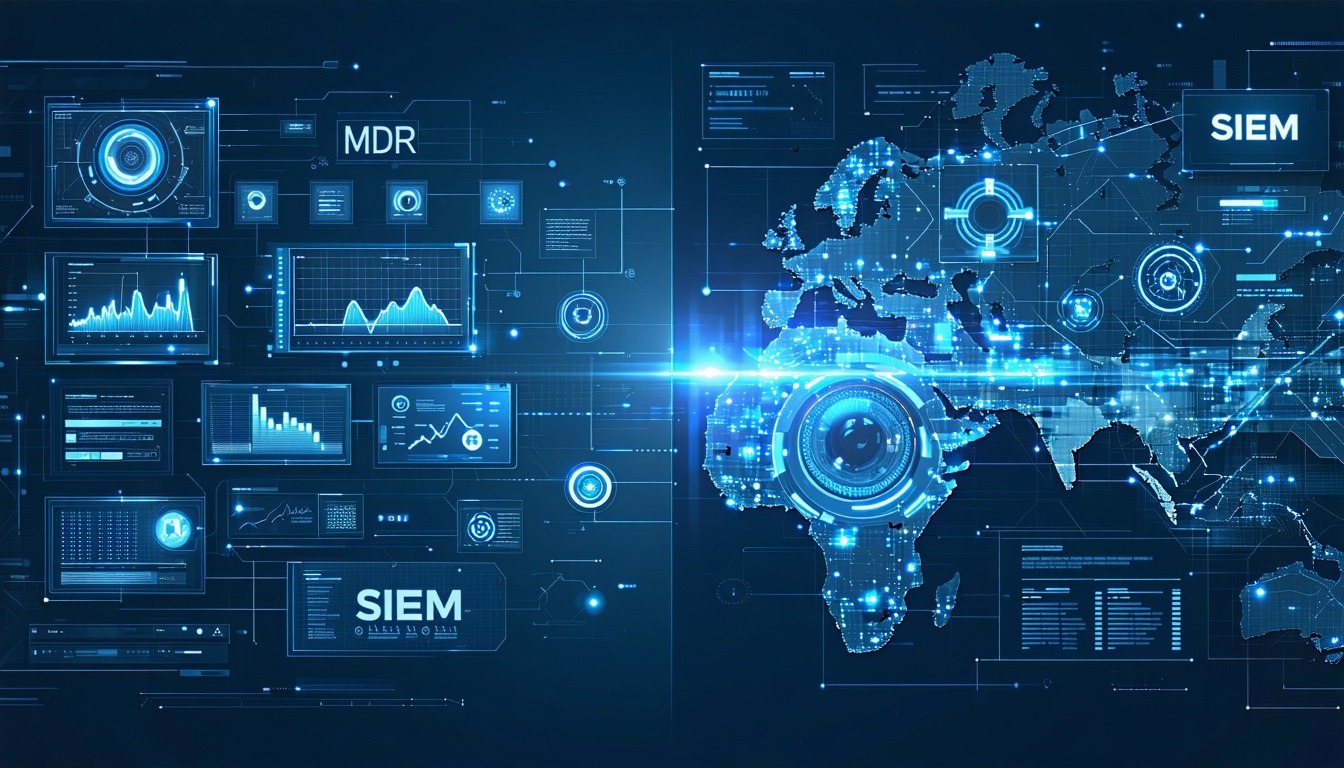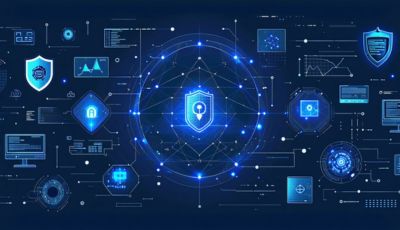Understanding SIEM Capabilities
Effective security monitoring often begins with Security Information and Event Management, or SIEM. In evaluating mdr vs siem, organizations commonly start by aggregating logs from networks, endpoints, applications, and cloud services into a centralized platform. SIEM systems capture, analyze, and correlate security information in real time, providing visibility into anomalous activity across an enterprise’s IT environment (SentinelOne).
Core Functions of SIEM
- Log Aggregation and Normalization: Collects data from firewalls, intrusion detection systems, servers, and more
- Real-Time Alerts: Generates notifications based on preconfigured rules and threshold breaches
- Compliance Reporting: Automates audit trails for regulations such as HIPAA, PCI DSS, and GDPR
- Historical Analysis: Enables forensic investigations and trend analysis through long-term data retention
Common SIEM Use Cases
- Intrusion Detection and Response
- Centralized Log Management
- Malware Prevention and Threat Hunting
- Forensic Analysis and Incident Investigation
- Regulatory Compliance Monitoring
Exploring MDR Services
Managed Detection and Response (MDR) offers a proactive cybersecurity model that extends beyond automated monitoring. It combines technology with human expertise to detect, analyze, and neutralize threats before they escalate. For readers new to the concept, see the detailed overview of mdr meaning.
Key Features of MDR
- Continuous Threat Hunting: Security analysts search for abnormal patterns and emerging threats
- Incident Triage and Investigation: Human-driven analysis to verify alerts and determine impact
- Rapid Containment and Remediation: Predefined protocols to isolate compromised assets
- Endpoint and Network Response: Automated or manual actions to block malicious activity
- Collaboration with Internal Teams: Shared dashboards and playbooks to support IT operations
Typical MDR Use Cases
- Insider Threat Detection and Response
- Complex Malware and Ransomware Attack Mitigation
- Integration of Threat Intelligence Feeds for Proactive Defense
- Machine Learning-Enhanced Anomaly Detection
- 24x7 Monitoring for Organizations Lacking In-House Security Staff (Exabeam)
SIEM vs MDR: Side-By-Side Comparison
The table below highlights fundamental differences between SIEM and MDR across core dimensions.
| Dimension | SIEM | MDR |
|---|---|---|
| Primary Focus | Data aggregation, correlation, reporting | Active threat hunting, incident response |
| Approach | Technology-centric, rule-based alerts | Hybrid of automated tools and expert analysis |
| Staffing Requirement | Requires skilled in-house analysts for configuration | Delivered by external or managed analysts |
| Response Capability | Alert generation, limited automated response | Rapid containment, forensics, remediation protocols |
| Cost Model | Upfront license and infrastructure investment | Subscription-based operational expenses |
| Pros | Comprehensive log visibility, compliance support | Proactive defense, reduced dwell time |
| Cons | Alert fatigue, resource-intensive setup | Dependency on service provider, potential data sharing |
Why Detection Alone Falls Short
That’s why relying solely on automated detection can leave critical gaps in security posture. Even with real-time alerts, organizations often struggle with:
Risks of Reactive Monitoring
- Alert Overload: Misconfigured correlation rules can trigger thousands of false positives
- Slow Triage: Manual validation delays response to genuine threats
- Skills Shortage: High demand for SIEM specialists often exceeds available talent
Need for Proactive Response
Proactive threat hunting and immediate remediation are central to limiting breach impact. According to an IBM Security Report, the average cost of a data breach in 2023 reached $4.45 million, underscoring the financial risks of delayed response (SentinelOne). Managed Detection and Response adds human context to alerts, reducing dwell time and improving incident outcomes.
Integrating MDR With SIEM
In other cases, organizations may adopt a hybrid model that leverages the centralized logging of SIEM alongside the active defense of MDR.
Benefits of a Hybrid Approach
- Enhanced Visibility: SIEM supplies MDR analysts with comprehensive event data
- Faster Remediation: Automated playbooks triggered by MDR teams using SIEM logs
- Scalability: Scales monitoring and response capabilities as the environment grows
- Centralized Dashboard: Unified view of security posture across tools (BitLyft)
Best Practices for Integration
- Prioritize Data Sources: Integrate critical logs high-risk endpoints first
- Align Playbooks: Ensure SIEM alert rules map to MDR response protocols
- Validate Workflows: Conduct joint tabletop exercises to test handoff between systems
- Monitor Performance: Regularly review key metrics such as mean time to detect (MTTD) and mean time to respond (MTTR)
Selecting the Right Model
Organizations may consider several factors when choosing between SIEM, MDR, or a combined solution.
Decision Criteria
- Internal Expertise: Availability of in-house security analysts
- Compliance Requirements: Scope of audit and reporting obligations
- Risk Tolerance: Acceptable dwell time and potential breach impact (mdr compliance)
- Service Level: Required response time and remediation capabilities
Cost Considerations
- Total Cost of Ownership: Compare upfront infrastructure costs for SIEM against subscription fees for MDR
- Scalability Expenses: Factor in data volume growth and corresponding license or service tier changes
- Hidden Costs: Account for staffing, training, and tool maintenance
Vendor Ecosystem
Evaluating the broader managed detection and response market helps in identifying providers that align with an organization’s tech stack. Decision-makers may also reference comparisons such as mdr vs edr, mdr vs xdr, mdr vs mssp and mdr vs soc to refine requirements.
Conclusion
SIEM and MDR each deliver critical security functions—SIEM for centralized visibility and compliance reporting, and MDR for proactive threat hunting and rapid response. However, detection alone often fails to contain sophisticated attacks before significant damage occurs. A hybrid approach, combining SIEM’s data aggregation with MDR’s human-led analysis and remediation, offers a more resilient defense posture. Organizations should align decision criteria, cost models, and internal capabilities to determine the optimal mix of tools and services.
Need Help With MDR Versus SIEM?
Need help with choosing between managed detection and response and SIEM? We help organizations navigate the complexity of security solutions by matching them with trusted managed detection and response companies. Connect with our experts to evaluate options, refine requirements, and secure the right solution for your enterprise.






